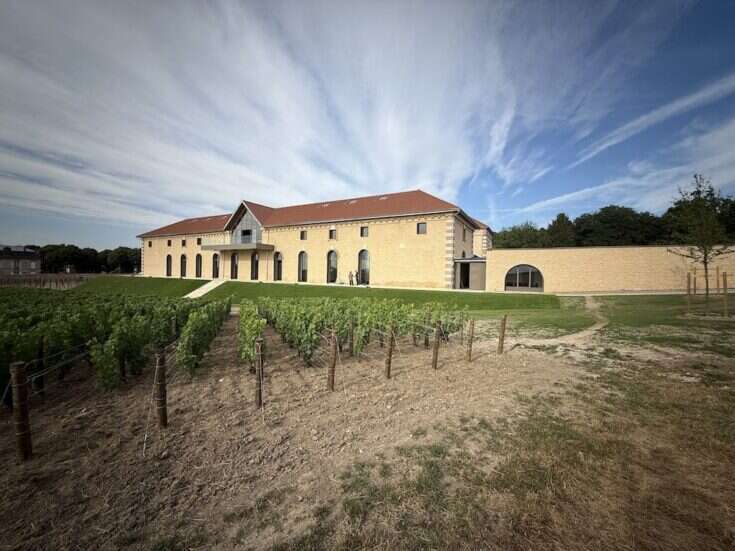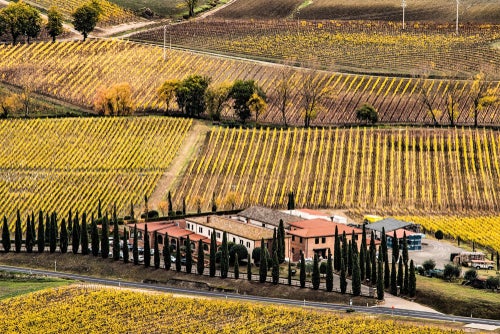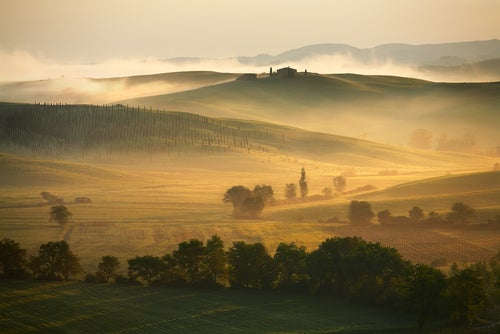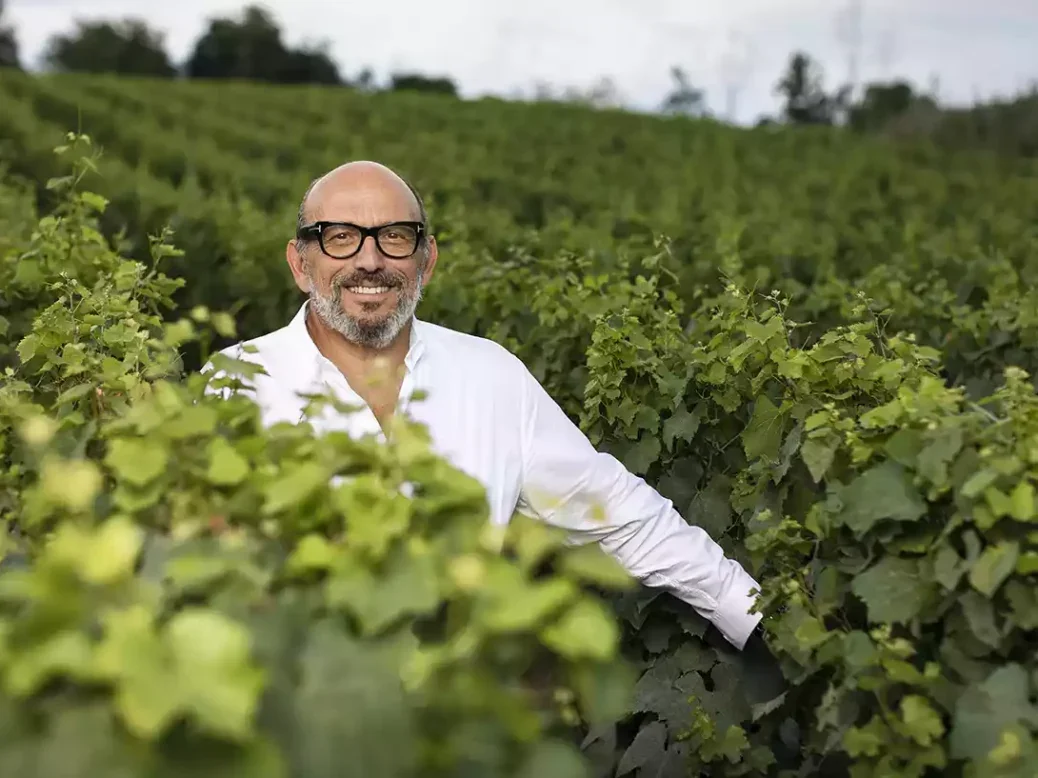
Anthony Rose enjoys the latest examples of the meticulous and innovative sparkling winemaking practiced by the Franciacorta estate, including the much-anticipated 1980 Ca’ del Bosco Annamaria Clementi RS.
The first time I came across Ca’ del Bosco’s berry spa was not in fact at Ca’ del Bosco but at Raumland in Germany. Volker Raumland had been so impressed by Ca’ del Bosco’s method of washing the grapes to remove impurities from its freshly picked bunches that he adopted the system himself. It’s no coincidence that Raumland is Germany’s top producer of traditional-method sparkling wines.
The opportunity to see the system for myself arose on a recent visit to Ca’ del Bosco in Franciacorta. After navigating the site-specific pieces of art dotted around the winery—including a Damien Hirst-like rhino made by Italian artist Stefano Bombardieri, suspended above the stainless-steel fermentation tanks—I finally got to see the remarkable and unusual grape-cleaning technique introduced to the winery by Maurizio Zanella in 2008.
Since that time, after selection, cold storage, and gentle pressing, the pampered grapes have passed through a “berry spa” in order to keep sulfur additions to a minimum and cleanse any impurities and spray residues. There are four lines for washing and drying the grapes. The grapes are prewashed in bubbling fresh water at around 61°F (16°C), then bubbled in water and citric acid, which eliminates 85% of impurities, before a final freshwater rinse and blow-dry in a drying tunnel. The entire process takes three minutes from washing to the press.
According to Maurizio, “It’s like before-and-after Photoshop, with all the excess hair and pimples Photoshopped out. As in the food industry, we wash to remove copper, but there’s an immediate reduction in sulfite addition to the juice—from 45mg, to 15mg.” Around two thirds of the must begins its fermentation spontaneously. The 35% of the remaining juice that doesn’t start its fermentation spontaneously gets going with the aid of a yeast starter.
Ca’ del Bosco was first certified organic in 2011, going the whole organic hog in 2014 on its 280ha (692 acres) of vineyards. The average age of the vines is more than 20 years, and vines must be at least 15 years old to qualify for any of the eight cuvées. Plantings average 5,000–10,000 vines/ha, the latter for the new plantings in 2023. The most recent plantings of Chardonnay and Pinot Noir, at an altitude of 1,800ft (550m), were planted five years ago. Santa Teresa comprises 3ha (7.5 acres) of Chardonnay and 1.17ha (3 acres) of Pinot Noir. La Torre is even higher, with 0.9ha (2.2 acres) of Chardonnay and 1ha (2.47 acres) of Pinot Noir. Some 1.5ha (3.7 acres) of Erbamat have been planted but are not yet used.
Vinification of each vineyard is carried out separately in stainless-steel fermentation tanks of 200hl, apart from the Vintage and reserva wines, which are 100% barrel-fermented. Each of the eight cuvées is blended after seven months aging, and long aging on lees is followed by bottling without the addition of sulfur dioxide. Maintaining sustainability and fastidious detail in the cellar are essential to Maurizio, who calls his winemaking the metodo Ca’ del Bosco. Since 2015, all Ca’ del Bosco wines have been either Extra Brut or Dosage Zéro. “We believe that the ripeness of the fruit here doesn’t need sugar to balance the acidity.”
1980 Annamaria Clementi RS: Worth waiting for
On my recent unscheduled visit to Ca’ del Bosco, Maurizio made a surprise appearance to show us the Cuvée Prestige RS 37, the 2018 Dosage Zéro, and 2015 Annamaria Clementi. Could we also have a sneak preview of the much-talked about 1980 Annamaria Clementi RS? “I’m afraid not,” replied Maurizio. “You’re going to have to wait until we launch it in London in June.”
Cometh the hour, cometh Maurizio Zanella, who had indeed brought along the 1980 Annamaria Clementi RS for the great and good of the wine world—and me—not just to taste but to drink at Harry’s Bar in Mayfair. Created in 1979 by André Dubois and originally called simply Ca’ del Bosco Franciacorta Millesimato, the name was changed, along with the bottle shape, to honor Maurizio’s mother, Annamaria Clementi, the original founder of Ca’ del Bosco, with the first vineyard planted in 1968. “1980 was the vintage that sparked in us the crazy idea of forgetting some 6,000 bottles sur pointe—to be able to study, explore, and discover the potential of our Franciacortas over time, and share it one day,” says Maurizio.
The wine is a blend of 40% Pinot Noir, 39% Chardonnay, and 21% Pinot Blanc, the latter two varieties bunched together at the time as “white Pinot,” and grown in seven vineyards in the Canelle locality surrounding Ca’ del Bosco. Some 6,000 bottles have been released, half sold on the Italian market and the other half on Ca’ del Bosco’s international markets, principally Switzerland, Japan, the USA, and the UK. With an attrition rate of between 8% and 9% of bottles that didn’t make the grade because of corks that had deteriorated, there were more like 2,700 bottles available for allocation to international markets. Forty-four years is a long time in the making, but this great fizz is well worth the wait.
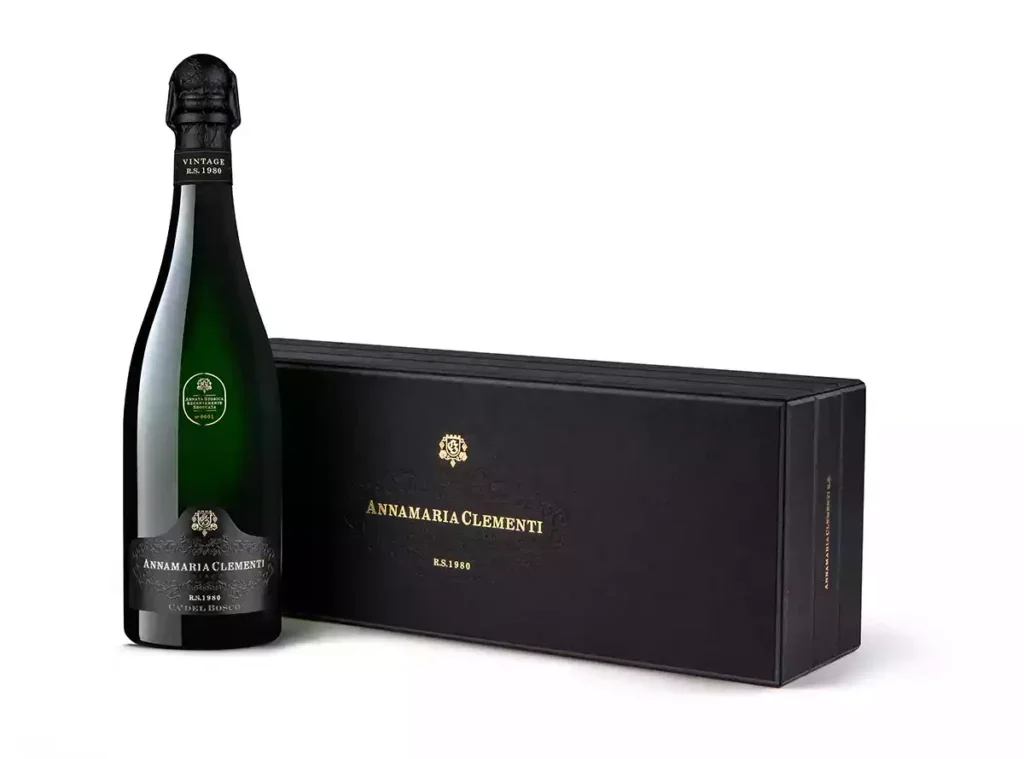
Tasting
1980 Ca’ del Bosco Annamaria Clementi RS Franciacorta Riserva
Made long before the berry-spa revolution at the winery, the “dirty” Annamaria Clementi, disgorged in August last year, showed not the slightest hint of oxidation. On the contrary, it is remarkably fresh, with a slight biscuity note in the bouquet. A fine, youthful mousse of bubbles follows, conveying the same biscuity notes of autolysis, then a dry nuttiness that enhances both the remarkable freshness and complexity of the wine. The extraordinary fruit quality and silky texture gives the lie to the idea that a sparkler without dosage cannot age beautifully, and this superb fizz more than lived up to its billing. | 96
2015 Ca’ del Bosco Annamaria Clementi Franciacorta Riserva
Disgorged in 2023, this youthful blend of 82% Chardonnay, 15% Pinot Noir, and 3% Pinot Blanc, at zero dosage, is mid-gold in color, super-fresh on first sniff, and super-pure, with fragrant, ripe, rich stone-fruit flavors, buoyed by an energetic, expansive mousse of bubbles. Still so tight in texture that it’s almost below the radar; a hint of oak spiciness underlies the fruit, adding complexity to the wine’s fine balance and freshness. Finishing slightly savory, tangy, and elegantly dry, this is a seriously complex fizz, with a decade or more’s life ahead of it. | 95
2019 Ca’ del Bosco Vintage Collection Extra Brut Franciacorta
Matured on the lees for 48 months, this blend of 65% Chardonnay, 30% Pinot Noir, and 5% Pinot Blanc is a selection from 18 vineyards of Chardonnay, seven of Pinot Noir and two of Pinot Blanc, all more than 25 years old. Low yields in this excellent vintage have contributed to both a beautiful berry fragrance and a concentration of fruit that explodes onto the tongue with a refreshing spritz, the raspberry fruit flavors dissipating into a delightfully tangy, dry finish. | 94
2018 Ca’ del Bosco Dosage Zéro
A blend of 76% Chardonnay, 16% Pinot Noir, 8% Pinot Blanc that has spent four years on the lees, disgorged in 2022, this is a selection from 26 vineyards. Golden in color, with a fine fresh fragrance and just a hint of smoky oak. An elegantly textured mousse of bubbles mitigates the richness of peachy ripe fruit and adds to the fruit freshness, all underlined by a smoky oak element and gradually turning to savory and dry on the finish. | 93
Ca’ del Bosco Cuvée Prestige Edizione 37 RS
Disgorged in the summer of 2023, this has a 2012 base wine, with 25% reserve wines from 2011 and 2010. A blend of 75% Chardonnay, 15% Pinot Noir, and 10% Pinot Blanc, this zero-dosage fizz displays a deep golden hue, lovely freshness with a really attractive fragrance, a bready, yeasty note, and opulent stone-fruit flavors whose chiffon-like texture floats in a mousse of tiny bubbles, finishing elegantly dry and refined. | 94

